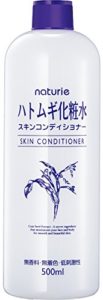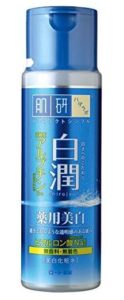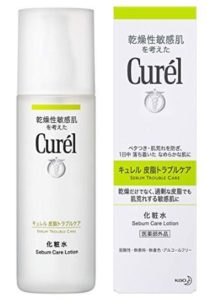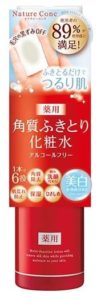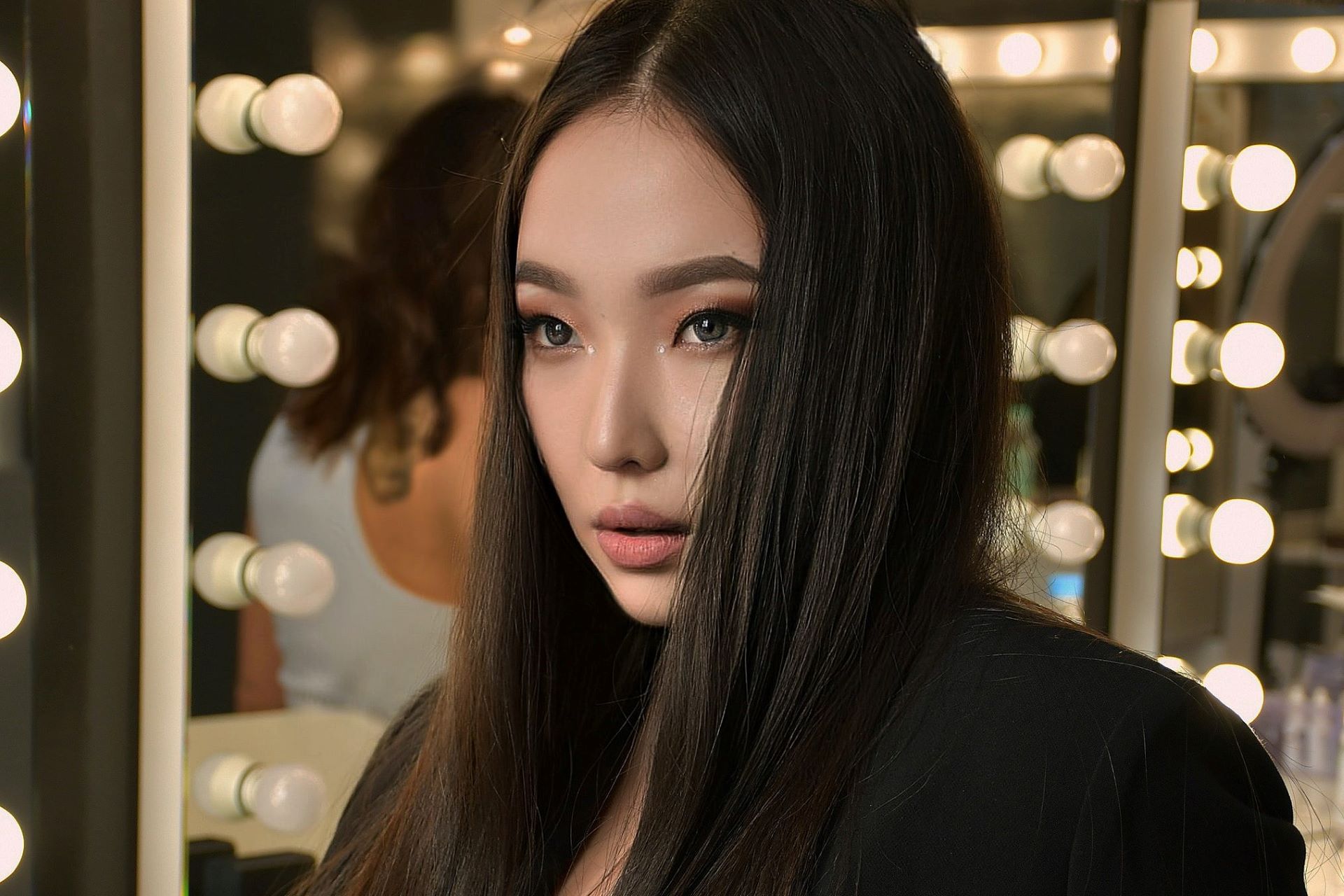What is Japanese Lotion? An Absolute MUST Step in the Japanese Skincare Routine
Are you using a toner or essence?
A Japanese lotion is a little similar but actually a TOTALLY UNIQUE concept you only find in the typical Japanese skincare routine.
So, what is Japanese lotion? As a Japanese person who has been using lotions for the last 25 years, I’m going to share all you need to know about Japanese lotions in this post!
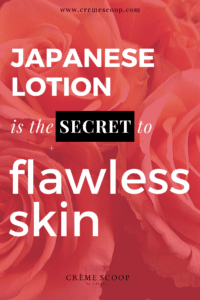
Let’s dive in!
I cover the history and the major difference between Japanese facial lotions and Korean essences or Western toners, so you get to know why you want to start using a Japanese lotion as part of your skincare routine for anti-ageing!
1. History of Japanese Lotions
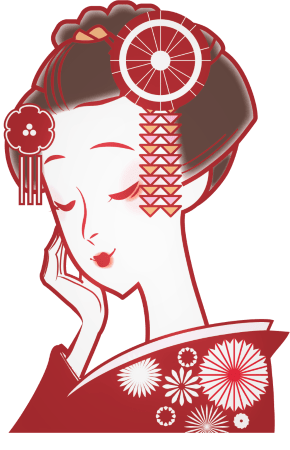
The history of Japanese lotion goes back to the era of The Pillow Book (枕草子 Makura no Sōshi) also known as the Heian Period around 1,000s.
In The Pillow Book, there is an account that indicates the birth of lotion in Japan. It describes the lotion as “Dew of Chrysanthemum (a kind of flowers)” – in Japanese “菊の露”.
Many believed that, on the eve of Chengyang’s festival on September 9th, if you put a flower of chrysanthemum on a cotton ball overnight and cleanse your skin with the dew of chrysanthemum that soaked in the cotton next morning, you will live a very long time.
Also, in the Edo period (1603 -1868), lotion made from luffa (aka loofa, sponge gourd, Egyptian cucumber, Vietnamese luffa or Hechima in Japanese) became popular. Hechima Water (へちま水) was born!
Women in the era called the lotion Hechima Water “Beauty Water (美人水)” as it held a potent power of making their skin beautiful. It was loved by the Royals at the Edo Castle too.
There was another lotion from the same period called “Water of Edo (江戸の水)”. A famous write called Shikitei Sanba, who was known for “Ukiyoburo (浮世風呂)” invented the lotion. He set up his pharmacy to sell his innovative lotion in central Tokyo in 1811.
It soon gained popularity and became a huge hit among all women in Tokyo. It was known for the magic it did before putting makeup.
Apparently, it prepared the skin so well for a foundation (white powder back then) to sit really well. Their makeup lasted all day long without any problem and touch-ups. It also did wonders to prevent acne and tackle skin trouble too.
It was used to condition the skin and prepare for the next steps (makeup or other skincare products).
The concept has not really changed ever since. It is a big tradition for Japanese women. And, of course, the love of lotion is still thriving to this day and quite possibly No.1 (Ichiban) in the world!
2. Lotion Culture in Japan vs the West
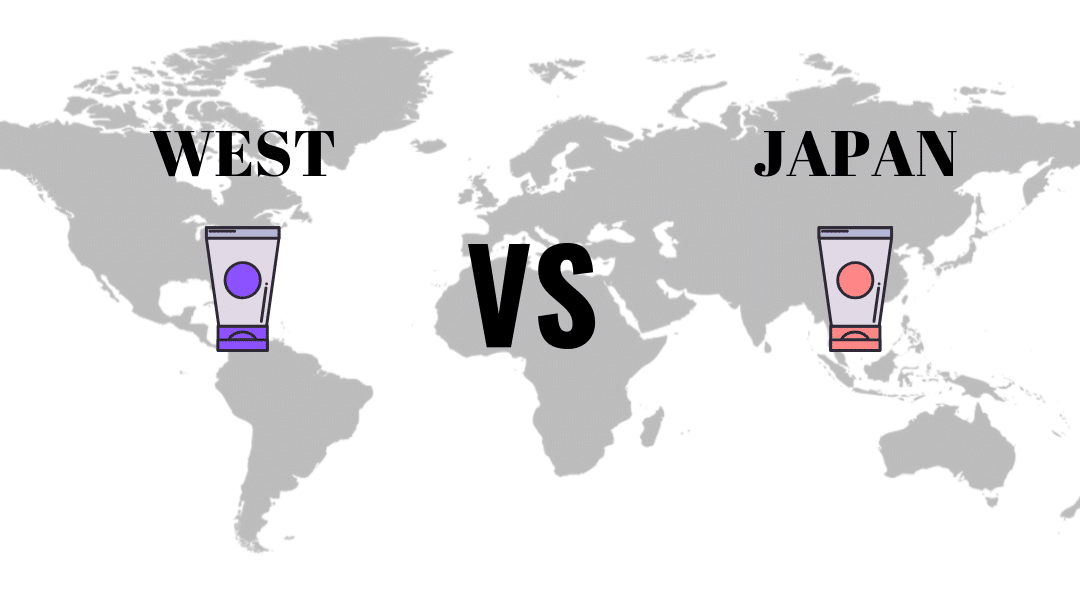
Japanese women absolutely love their lotions.
Japanese women live with it and swear by it.
The percentage of women who use lotions reaches a staggering 90%!
Using a lotion is A MUST in the typical Japanese skincare routine.
Many Japanese women research and test thoroughly what’s available in the market to find the VERY best and the ones that suit their skin type and skin concerns.
Personally, I’ve been using lotions since the age of 13, so I’ve been testing and trying for 25 years!
So, why do they love it so much??
The answer lies in the nature that is indigenous to Japan.
Japan has long been blessed to have clear water throughout the country thanks to the fast flow of the rivers. The Japanese often referred to the flow of water in the rivers as a force of purity.
Water has been associated with cleansing minds, purifying souls, and as a result, you glow from the inside out.
They have a deep respect for the pure water which has been giving them many blessings for thousands of years. It was only natural for them to develop beauty regimes around water.
So, there we are…
We love lotions 🙂 Whereas in the West?
I’ve been living in Europe for 15 years, and I can see why toners are more popular than lotions.
It is the climate and water.
Water in Europe has lots of minerals, and it is hard water. It feels quite hard on the skin.
When I first came to Europe, I remember I suffered a lot from itchy and dry skin for a while, as my skin was used to soft water. (Yes, you get soft water in Japan, and it feels soft on the skin.)
Also, the air in Europe is dry throughout the year compared to Japan. It used to make my skin easily dehydrated too.
With the combination of dry air and hard water, moisturising feels its main focus here. It could well be the reason serums, and creams became the mainstream in their skincare routine.
To prep the skin before a serum, a toner seems to be a natural choice in the West due to the type of water you get. You tone the skin well so that serum or cream can absorb better and more effectively.
So there we are, we can see why toners are used more here in the West than lotions (or essences in K-Beauty). 🙂
3. The Magic of Japanese Lotion

There are things which ONLY Japanese lotions can achieve.
That is:
They are designed to work to enhance hydration & elasticity.
How so?
It works on NMF (Natural Moisturising Factor) which is responsible for keeping the right amount of hydration for the outer layer of your skin.
In other words, it’s focusing on developing the best condition for the skin to produce NMF which retains moisture and elasticity.
On top of that:
It also has a function of preparing the skin for the next steps. It is designed to help serums and creams to penetrate better.
The skin after cleansing is very delicate with all dirt and sebum removed. And if you left it as it is, the moisture of the skin would soon be gone and become dry.
So you need to replenish the skin before moving onto more power stuff like serums, masks and creams.
Japanese lotions are really magical and very unique in that way.
Japanese women apply a lotion right after cleansing.
Morning and night.
Day in day out.
All year round or better yet all their lives.
To summarise, here are the primary purposes of Japanese lotion.
- Soothe the skin right after cleansing
- Condition the skin texture for the next steps (serums/creams)
- Develop the best condition to generate NMF for suppleness
When you put some lotion, your skin should feel:
- Softer
- Moisturised
- Supple
We call it “mochi hada” (mochi skin). I love the feeling so much myself!!!
I really CAN’T live without it.
Mochi is, as you may know, rice cake. When you touch your skin after applying lotion, the skin should be like mochi 🙂 so soft, bouncy, smooth etc.!!
It would make a HUGE difference already in the next steps of your skincare routine if you introduced a lotion today! Your skin would look hydrated and glowing.
Japanese cosmetic companies are crazy about innovating and perfecting lotions, and the evolution seems to never stop! Personally, I would NEVER EVER live without lotion!
4. What Types of Lotions Do Exist in Japan?
Japanese lotions have evolved over the century and are now VERY advanced. Some of them even have the same effectiveness as serums. There are various types of lotions available in Japan.
Not all of them have the same function(s). Some are focused on moisturising, some on anti-ageing, some on whitening etc.
It is best to choose one depending on your skin type/condition and needs.
Hers is the list of typical lotions found in Japan 🎌.
Prep-Lotion (Toner)
This is a lotion you use before applying your regular lotion. It prepares the skin for the lotion to penetrate well.
( popular moisturising lotion in Japan: SK-II Facial Treatment Clear Lotion )
Moisturising Lotion
It moisturises and soothes the skin. It prepares the skin for serums and creams to penetrate better. Your skin should feel moist and hydrated after applying.
( popular moisturising lotion in Japan: Hatomugi Skin Conditioner )
Whitening Lotion
It is a moisturising lotion with whitening ingredients. It helps brighten up the skin. It also can help prevent melanin production system from being activated as well as reduce melanin.
( popular whitening lotion in Japan: Hada Labo Shirojun Medicinal Skin Whitening Face Lotion )
Acne Lotion
It is specifically designed to treat acne. It contains active ingredients like Glycyrrhizic Acid and Tocopherol (vitamin E) which help calm the skin and minimise signs of sensitisation. It also has anti-inflammatory effects too.
( popular acne lotion in Japan: Curél Sebum Care Lotion )
Oil Control Lotion (Astringent Lotion)
It tends to have a refreshing feel as it contains a lot of alcohol. It has the effect of controlling sebum and tightening the skin (reducing pore size). A perfect solution for oily skin.
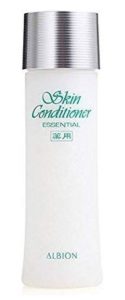 ( popular acne lotion in Japan: Albion Skin Conditioner Essential )
( popular acne lotion in Japan: Albion Skin Conditioner Essential )
Clarifying Lotion
It gently removes dirt, dead skin cells (old keratin) and excess oil. It is like a milder exfoliator. Apply it to a cotton pad, soak it thoroughly and then wipe your entire face gently.
( popular acne lotion in Japan: Nature Conc Medicated Clear Lotion )
5. Using Cotton or by Hand?
To maximise the effect of your lotion; how you apply is very important.
It is best to do it by hand instead of cotton (except clarifying lotions).
The hand and face are made up of the same skin, so they have a high affinity for each other.
There are many merits in using hands.
① The hand temperature warms up the lotion, and it helps your skin to absorb it better.
② Softer on the skin and no need to worry about rubbing and hurting the skin.
(There is even a study that says “there were some fine scratches after using cotton.)
③ You will become more aware of your skin condition
By touching the skin, you can become more sensitive to any change of your skin (sagging, loss of moisture or firmness, etc.) and be able to treat with the right products.
6. How To Apply
Don’t rush; take your time to apply gently and the entire face.
① Put the recommended amount of lotion onto the palm of your hands
② Warm the lotion up by putting the palms together like praying. It helps the lotion to penetrate better.
③ Apply carefully and gently with hand press – the order is from the centre to outer part (cheeks, chin, forehead and eyes at the end)
For around the eyes, hand-press in a way an eye mask would sit (angle of your hands)
④ Optional: Repeat [1] – [3] to achieve extra hydration and suppleness
Personally, I do repeat at least twice as I love the feeling of my skin so moisturised and it feels like having baby skin – mochi skin 🙂
7. Points to Remember!
Lastly, here are 3 points you want to bear in mind when applying lotion!
# POINT1 | Think of It As a Booster
Although it hydrates the skin, it is not a moisturiser like a cream.
Many Japanese lotions provide hydration and help retain skin’s natural moisture, and many people think they may not need moisturisers afterwards.
But! A lotion is a booster in the Japanese skincare routine.
It is used at a stage where you condition the skin after cleansing.
Cleansing –> Lotion –> (Mask) –> Serum –> Cream etc
It holds the KEY in that it can decide how effectively the skin can benefit from serum or cream in the latter part of the routine.
# POINT 2 | Day & Night – Plenty Of It
Make sure you use a lotion both for morning and night. I recommend taking more time to apply for night time. Don’t rush.
Your skin is tired after a long day, and it needs your lots of attention. Check your skin condition as you apply lotion – like speaking with your skin 🙂
Also, use a little more than the recommended amount. I find that it helps to hydrate and serum.
# POINT 3 | Hand-Press Gently with TLC & Respect
Every time you touch your skin, imagine you are touching a very delicate thing.
Treat your skin with extra care.
When hand-pressing lotion, do it VERY gently wrapping your entire face delicately with both hands. For eyes, do it like you put an eye mask with your hands.
Summary
Here is a quick summary of what Japanese lotion is!
- The history goes back to 1’000’s in Japan
- It is a unique concept, NOT the same as Korean essences or facial toners
- It enhances hydration and elasticity
- It preps the skin and makes the next steps more effective
- It is a MUST step in the Japanese skincare routine
- There are 6 types of lotions in Japan (prep, moisturisng, whitening, acne, oil-controlling, clarifying)
Japanese lotions are designed to make your skin more supple and smooth if you kept using consistently.
It’s particularly worth trying if you are looking to cure dry skin or even dull skin.
Why not introduce a lotion into your skincare routine and try it for 28 days (an average skin regeneration cycle)?
It’s never too late to start using a lotion – women of all ages can benefit from Japanese lotions!
Hope you enjoyed this post and inspired to try the first Japanese lotion!
If you need any help, just let me know if you have any questions either in the comment section below or by email!
Enjoy the magic of Japanese lotion 🌸

About the author
Nana is a Japanese model-turned-entrepreneur and the founder of this blog. She was born and raised in Japan and currently lives in Switzerland. She started her skincare journey at the age of 13 when her mother introduced her ritual to her. Now 39, her love of skincare (Japanese way of course!) is bigger than ever before. She's here to share her decades of experience in the world of Japanese skincare to help all women from around the globe live happily with beautiful skin.


